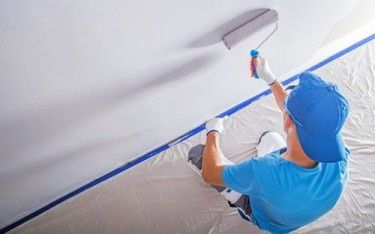Wet plastering is an old-age technique for building internal walls. It was introduced in ancient times and is still one of the preferred choices of the homeowners for producing thick and solid walls. DIY plastering is impossible and you need professional plastering service providers
For getting that professional finish on your interior walls, you need to decide between the dry lining and wet plastering. Taking a decision is very difficult because both the options have their pros and cons. Also, there are many factors on which dry lining and wet plastering are differentiated.
Wet plastering is an old-age technique for building internal walls. It was introduced in ancient times and is still one of the preferred choices of the homeowners for producing thick and solid walls. DIY plastering is impossible and you need professional plastering service providers.
On the other hand, dry lining was introduced in the 1900s as an alternative to wet plastering. As compared to wet plastering, dry lining takes less time for application and is cost-effective.
The other differences between the dry lining and wet plastering based on different factors are:
Process of application
Dry Lining- Ready-made boards or plasterboards are cut to size and then attached to the wall using masonry adhesive or studs. Sometimes, is used at the fastening points. Later, the screw holes are filled and joints are taped to produce a smooth finish.
Wet Plastering- With the help of the professionals providing plastering services, the plaster is mixed with water and other materials if required. The mixture is applied to the walls and left for drying. Usually, two coatings are required before the final phase of drying. It takes hours or days to dry.
Cost of the service
Dry Lining- The plasterboards are easy to install; thus, the dry lining process requires less labor or can be done by you. Also, it takes less time as compared to traditional plastering. So you can save lots of bucks through the dry lining.
Wet Plastering- The process requires more items and labor because it involves several stages. Also, it takes more time in drying. The time difference and labor cost are much higher for wet plastering so the service is a bit expensive.
Sound-proofing
Dry Lining- Plasterboards are not so thick and mostly installed without soundproof material. So it is very poor at sound insulation. With the hollow trumps plasterboard, it’s easy to hear the conversation of the people from another side of the walls.
Wet plastering- The wet plastering is quite thick and sound-reflecting which makes it more soundproof than the dry lining. Also, the sound clarity inside a room remains quite strong.
Durability
Dry Lining- Though dry lining has layers of plasters on the surface to increase strength and durability, it does not exist for a long. The plasterboards get damaged easily and require regular maintenance.
Wet plastering- It is like a one-time process. Once done, you do not need to worry much about your walls and spend extra money on their maintenance. Wet plasters suffer from cracks and holes but not like dry lining. The application will still shine like new even after years.
Finish and quality of the service
Dry lining- Due to the use of ready-made boards, the finish isn’t smooth as plaster and does not provide a good seal. Chances of unevenness are extremely high.
Wet plastering – The plaster mixture applied on the walls gives a neat and polished finish. It offers an excellent smooth texture and assures a better aesthetic than the dry lining. You can paint the walls as soon as the plaster gets dried up.
We already said that both dry lining and wet plastering have their pros and cons. So you should evaluate them and consider your requirements before making a decision.





